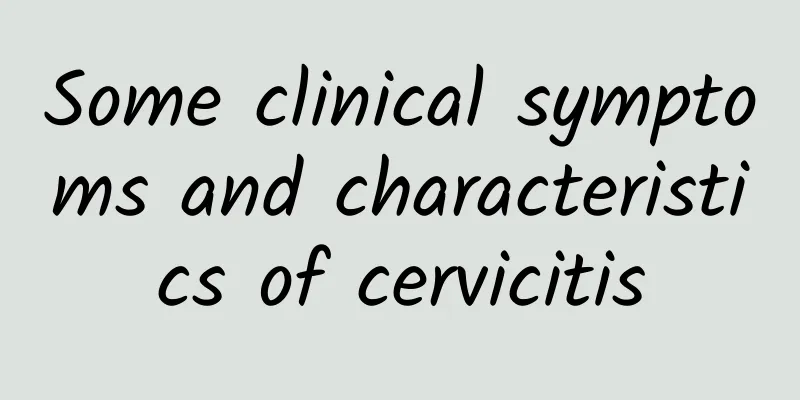Treatment options for pelvic peritonitis

|
In principle, the treatment of pelvic peritonitis is to actively eliminate the cause of peritonitis, and thoroughly clean and absorb the pus and exudate in the abdominal cavity, or promote the absorption and localization of exudate as soon as possible. There are many treatments for pelvic peritonitis, such as general therapy, antibiotic treatment, surgical treatment, etc. So, what are the treatments for pelvic peritonitis? Three treatments for pelvic peritonitis 1. General treatment All patients should rest in bed and take a semi-recumbent position to facilitate the accumulation of exudate or pus in the pelvic cavity, thereby limiting the inflammation. Adequate nutrition and fluid infusion should be given, and electrolyte disorders and acid-base imbalances should be corrected. Physical cooling can be used when effective. Gastrointestinal decompression can be given for patients with severe abdominal distension. Unnecessary gynecological examinations should be reduced to avoid the spread of inflammation. 2. Antibiotic Treatment Patients with acute pelvic peritonitis should undergo bacterial culture of cervical secretions or posterior fornix puncture fluid, or blood culture and drug sensitivity test, and select effective antibiotics based on this. When the pathogen is unclear, gentamicin plus metronidazole can be used, which is effective against Escherichia coli and anaerobic bacteria. The specific usage is gentamicin 80,000 U, twice a day, intramuscular injection, 0.2% metronidazole 500 ml once a day, intravenous drip. You can also use 2.4 grams of Ansitrol, add liquid to intravenous drip, once a day, and take Ansitrol tablets 0375 in the evening to enhance the efficacy; in addition, vancomycin B, Clavula, erythromycin, fosfomycin sodium, etc. can all be used. When the results of bacterial culture and drug sensitivity test are detected, it should be decided whether to change the antibiotic based on the results of the drug sensitivity test and the efficacy of the first selected antibiotic. Generally, those with better efficacy can be replaced, but those with insignificant efficacy after 3 to 4 days of medication should be replaced in time. 3. Surgical treatment 1. Incision and drainage: When pelvic peritonitis causes abscess formation and the abscess has reached the pelvic floor, incision and drainage can be performed through the posterior fornix. However, since the abscess is located in the abdominal cavity, drainage can only temporarily relieve symptoms and often cannot cure the disease. 2. Laparotomy to remove the lesion: When a pelvic abscess forms and ruptures, laparotomy can be performed to remove the lesion while controlling the infection with large amounts of antibiotics. This is the most effective and rapid method. The above is an introduction to the treatment methods for pelvic peritonitis. I hope it will be helpful to you. |
<<: What is a good way to treat female pelvic peritonitis?
>>: How acupuncture treats pelvic peritonitis in women
Recommend
How to treat female cervical erosion? It is recommended to treat it in this way after confirming cervical erosion.
Cervical erosion can often affect pregnancy due t...
Methods of regulating endocrine in patients with primary amenorrhea
Patients with primary amenorrhea often have endoc...
What are the factors that cause cervicitis? Women have three feelings when they suffer from cervicitis.
Cervicitis is a very common cervical problem in w...
Be careful of ectopic pregnancy after painless abortion
Precautions after painless abortion: Be careful o...
Why is menstruation irregular?
Why do I have irregular menstruation? 1. Hormone ...
Is it necessary to remove the ovaries if you have ovarian cysts?
Is it necessary to remove the ovaries if I have o...
Can pregnant women with cervical precancerous lesions give birth naturally?
Women who suffer from cervical precancerous lesio...
Papaya fights aging and helps with weight loss. Nutritionist: Eating it at this time will double the effect
Papaya, once rated as the most nutritious fruit b...
Can dysmenorrhea heal itself after marriage? Women with dysmenorrhea can eat more durian to relieve pain
Dysmenorrhea refers to the feeling of lower abdom...
What should women do if they have irregular menstruation? Here are 9 tips for regulating menstruation
Many women in life have irregular menstruation pr...
Treatments for vulvar itching
Vulvar itching is an uncomfortable feeling that m...
Ovarian cysts are effectively preventable
The prevention of ovarian cysts is something that...
What should not be eaten for uterine fibroids? Dietary care methods for patients with uterine fibroids
Uterine fibroids are the most common benign tumor...
What is the difference between dysfunctional uterine bleeding and menstruation?
The difference between functional uterine bleedin...
What causes uterine fibroid pain? What to do if uterine fibroid pain
What causes uterine fibroid pain? What to do if u...









